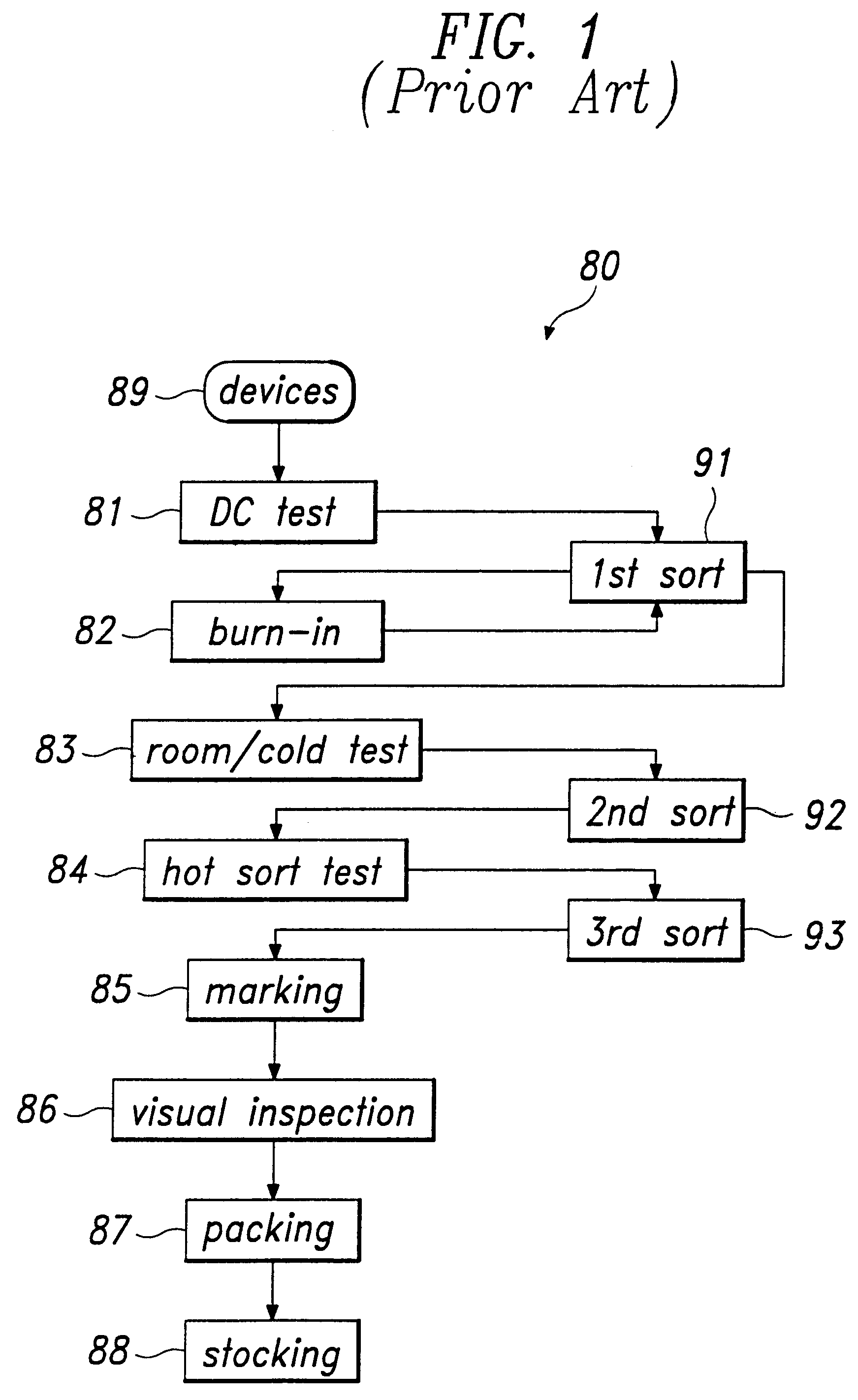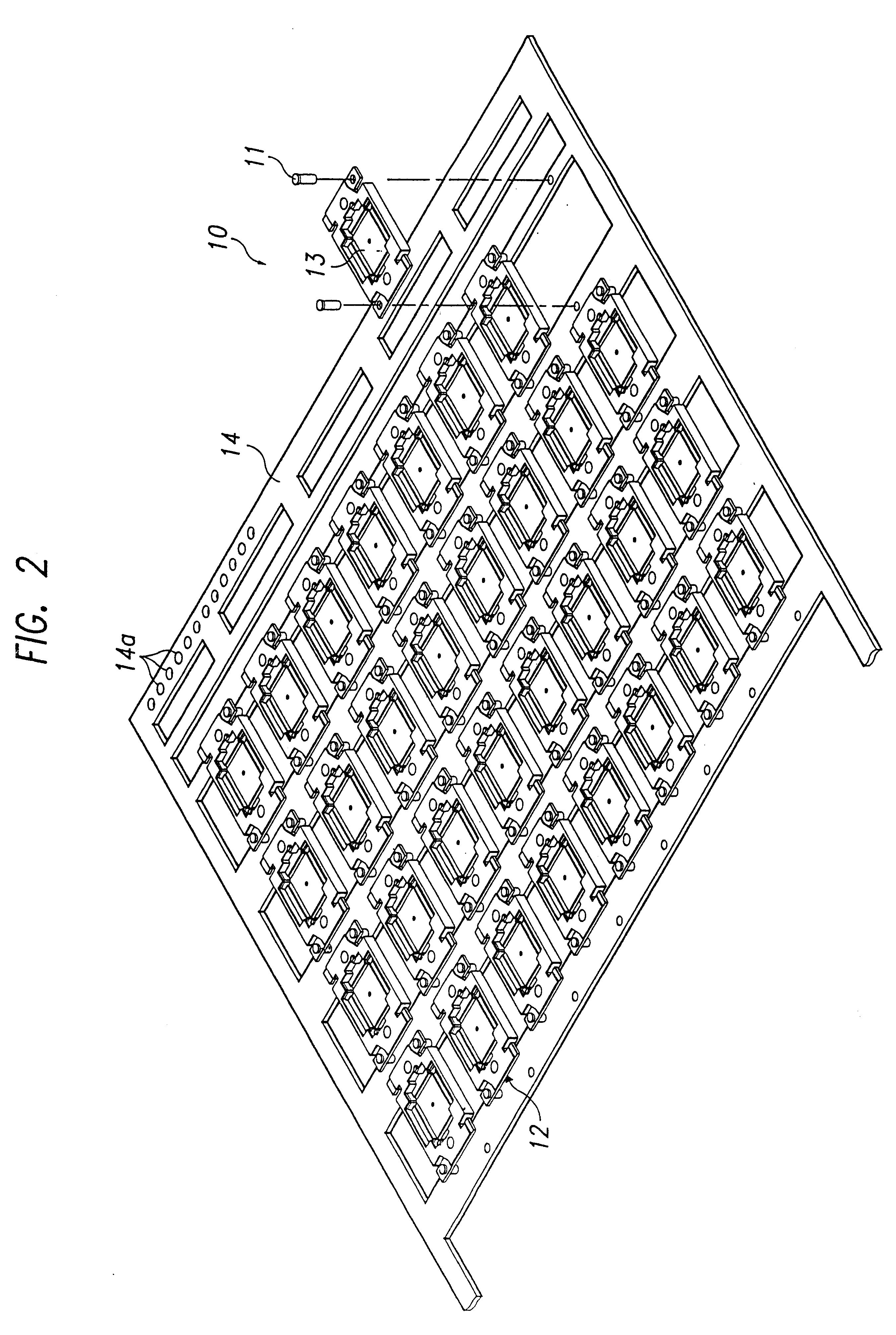Test and burn-in apparatus, in-line system using the test and burn-in apparatus, and test method using the in-line system
a test and burnin technology, applied in the direction of individual semiconductor device testing, semiconductor/solid-state device testing/measurement, instruments, etc., can solve the problems of time requirements, added time and complexity, and increased time and complexity
- Summary
- Abstract
- Description
- Claims
- Application Information
AI Technical Summary
Benefits of technology
Problems solved by technology
Method used
Image
Examples
Embodiment Construction
The preferred embodiments of the present invention will now be described more fully with reference to the accompanying drawings, in which like numerals represent like elements. It should be noted, however, that this invention may be embodied in many different forms and the claims should not be construed as being limited to the embodiments set forth in this description. Rather, these embodiments are provided by way of illustration only, so that the disclosure will be thorough and complete and convey the spirit but not scope of the invention to those skilled in the art. The scope is limited solely by the claims.
Various tests are required for ensuring the proper functioning of semiconductor devices. These tests are performed using one or more test and burn-in apparatuses in accordance with the present invention. In particular, the test and burn-in apparatuses (TABI) are so called because in the present invention, they enable a burn-in process in addition to the typical semiconductor de...
PUM
 Login to View More
Login to View More Abstract
Description
Claims
Application Information
 Login to View More
Login to View More - R&D
- Intellectual Property
- Life Sciences
- Materials
- Tech Scout
- Unparalleled Data Quality
- Higher Quality Content
- 60% Fewer Hallucinations
Browse by: Latest US Patents, China's latest patents, Technical Efficacy Thesaurus, Application Domain, Technology Topic, Popular Technical Reports.
© 2025 PatSnap. All rights reserved.Legal|Privacy policy|Modern Slavery Act Transparency Statement|Sitemap|About US| Contact US: help@patsnap.com



